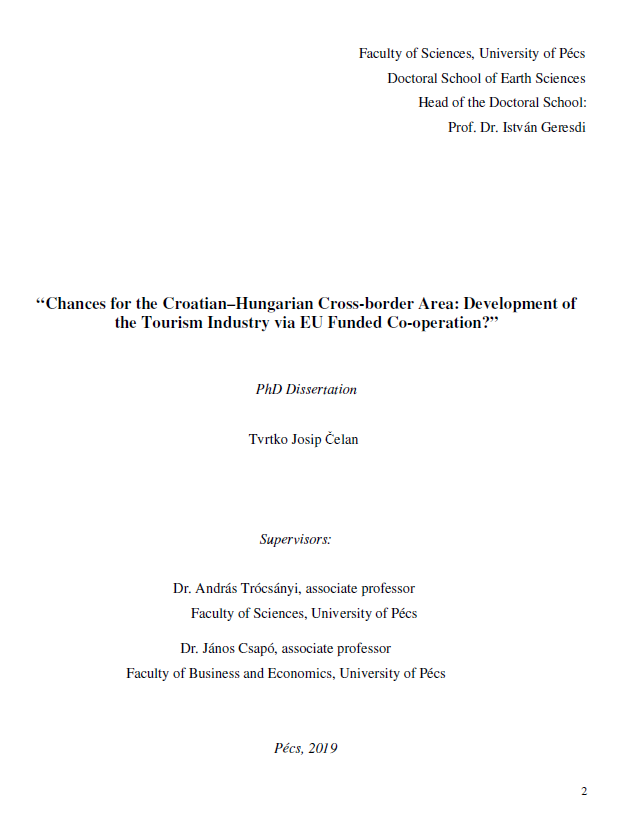Chances for the Croatian–Hungarian Cross-border Area: Development of the Tourism Industry via EU Funded Co-operation?
Abstract
The specific objective of this dissertation is to examine the chances for the tourism development
of the Croatian–Hungarian cross-border area i. e. whether a development of the tourism industry
could be achieved via EU funded cross-border co-operation, or not. The general objective of the
dissertation is to survey whether in case of the Croatian–Hungarian EU funded cross-border
Programme is it a naturally driven development, based on co-operation. Or the conclusion would
be that the available funding (EU Cohesion Policy territorial co-operation objective) is just a
source for support of the individual project ideas developed separately on the other side of the
border?
Croatia is a country with the tertiary sector accounting for 70% of total gross domestic
product (GDP), where tourism as a major industry makes 17% of the GDP 1. At the same time in
a predominantly tourism country, the Croatian side of the border with Hungary is an example of
the underdeveloped tourism region. On Hungarian side the situation is a bit different, taking into
account that the south-west and south parts of the Lake Balaton, one of the strongest engines of
tourism in the county, territorially belong to Zala and Somogy counties. With the lack of funding
and financial crisis, the Croatian side of the border area with Hungary has tried to find the
alternative source of funding for the tourism infrastructure and activities from the EU funded
co-operation programmes, especially from Hungary–Croatia Cross-border Co-operation:
HU-HR (IPA) CBC Programme 2007-2013 and Interreg V-A HUHR Co-operation Programme
2014-2020. For Hungarian side, especially border parts, which are not benefiting from the
vicinity of Balaton, cross-border co-operation deemed to be an opportunity for tourism
development as well.

